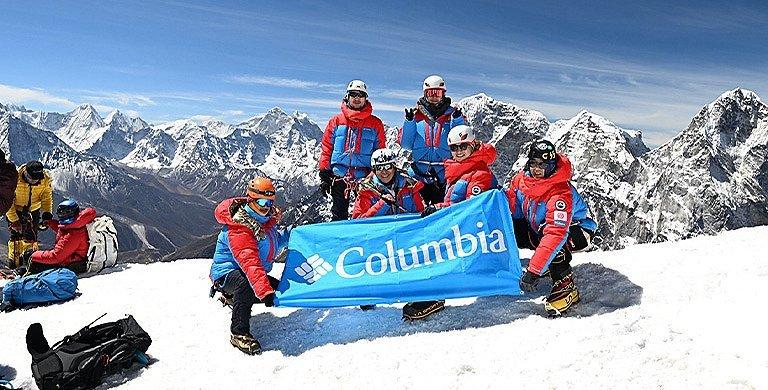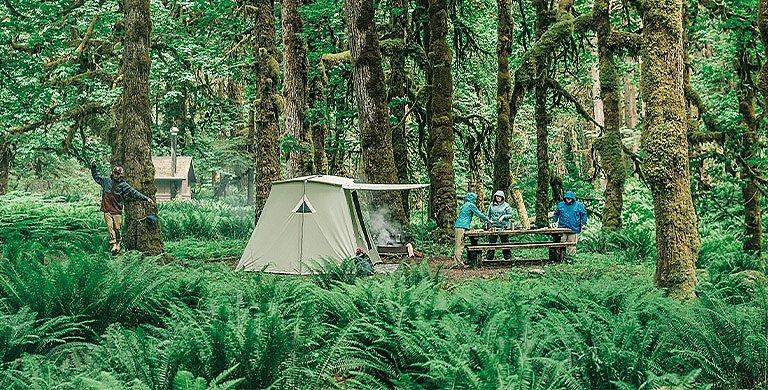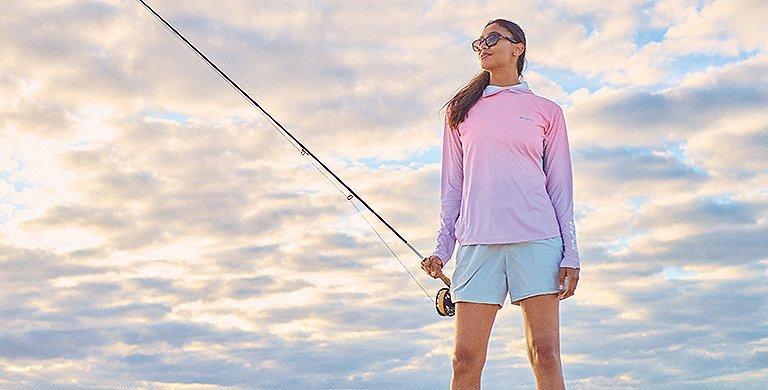
TECHNOLOGY
Don’t Sweat the Small Stuff: Columbia’s Guide to Omni-Wick Moisture Managing Technology
BY: NANCY BOUCHARD
There’s No Thrill In Chill: Stay Dry, Not Damp
Sweat is everywhere. Your body is just doing its job—cooling you down. But that coolness can backfire. Hike to a breezy summit suddenly you're chilled, your sweat-soaked shirt clinging to your skin. Or you're finishing the last few miles of a run, clothes wet and body temp dropping fast. Now it’s not just about discomfort, it’s about chafing, shivering, even hypothermia. Sweat without the right gear can turn tough into dangerous.
As my grandmother used to say, “Horses sweat, men perspire, and women glow.” But in reality, it’s the body’s efforts to cool down. The problem isn’t actually how sweat looks—but what happens when you stop moving. Sweat lingers. Wind picks up, temps drop, and suddenly you’re flirting with hypothermia over what was supposed to be an uneventful fishing trip or nature walk. In warmer weather, the same soggy fabric can trap heat, prevent proper cooling, and send your core temperature in the wrong direction. It doesn’t matter if you’re layering or wearing a stand-alone baselayer. Staying dry matters.
As my grandmother used to say, “Horses sweat, men perspire, and women glow.” But in reality, it’s the body’s efforts to cool down. The problem isn’t actually how sweat looks—but what happens when you stop moving. Sweat lingers. Wind picks up, temps drop, and suddenly you’re flirting with hypothermia over what was supposed to be an uneventful fishing trip or nature walk. In warmer weather, the same soggy fabric can trap heat, prevent proper cooling, and send your core temperature in the wrong direction. It doesn’t matter if you’re layering or wearing a stand-alone baselayer. Staying dry matters.

Sweat Happens. Now What?
Back in the day, we wore cotton, but if you’ve ever been outdoors, sweating in a cotton T, you know that once its wetted out, you’re soaked. Synthetic fabrics release moisture more quickly, but they don’t do the heavy lifting of moving sweat from your skin through the fabric to the air. That’s the magic you need to really stay cool, dry and comfortable. As Haskell Beckham, VP of Innovation at Columbia explains, “Synthetic fabrics like polyester don’t naturally wick on their own—they need a little help. They typically require application of a chemical finish to exhibit wicking, that spontaneous movement of perspiration through a fabric, along fiber surfaces, driven by capillary forces.”
Evaporative Cooling
Columbia’s innovation team got together back in 1997 to develop the ultimate wicking technology. The result was Omni-Wick, with fabrics that are engineered to draw moisture away from your skin and spread it out, so it dries quickly and helps regulate your body temperature. “Wicking helps spread perspiration across a fabric’s surface, which boosts evaporation—and that’s key to cooling the body through evaporative cooling,” explains Beckham. “More evaporation also means faster drying, which directly contributes to a more comfortable wearing experience.”
And, since then, the Innovation Team has found that it’s not just about whether a fabric wicks—it’s about how efficiently it does the job. To make the ultimate moisture transfer work, Columbia did a lot of research, both in the lab and on athletes. “Wicking is quantified by tests that measure rate of fluid movement, or extent of fluid movement for a given time,” Beckham explains. “Standard wicking tests include measuring how fluid moves both horizontally and vertically across the fabric’s surface.” Special fabric has been constructed to encourage wicking that occurs through the plane of the fabric. That means Columbia’s engineers aren’t just slapping on coatings—they’re designing textiles from the ground up to do this job better.
In addition to materials such as Omni-Wick that draw moisture from the skin, air movement is incredibly important for staying comfortably dry as well as aiding the evaporative cooling process. “This is where ventilation comes into play,” says Debra Criss, Columbia’s Senior Director for Apparel Design. “This can come in the form of cape vents on the back of shirts, mesh panels, and even leaving mesh-lined pockets open when not in use. All these features promote airflow into, around, and back out of the garment. They take extra heat and sweat along with it!”
And, since then, the Innovation Team has found that it’s not just about whether a fabric wicks—it’s about how efficiently it does the job. To make the ultimate moisture transfer work, Columbia did a lot of research, both in the lab and on athletes. “Wicking is quantified by tests that measure rate of fluid movement, or extent of fluid movement for a given time,” Beckham explains. “Standard wicking tests include measuring how fluid moves both horizontally and vertically across the fabric’s surface.” Special fabric has been constructed to encourage wicking that occurs through the plane of the fabric. That means Columbia’s engineers aren’t just slapping on coatings—they’re designing textiles from the ground up to do this job better.
In addition to materials such as Omni-Wick that draw moisture from the skin, air movement is incredibly important for staying comfortably dry as well as aiding the evaporative cooling process. “This is where ventilation comes into play,” says Debra Criss, Columbia’s Senior Director for Apparel Design. “This can come in the form of cape vents on the back of shirts, mesh panels, and even leaving mesh-lined pockets open when not in use. All these features promote airflow into, around, and back out of the garment. They take extra heat and sweat along with it!”

You Don’t Need to Be the World’s Greatest Athlete to Appreciate Dry Clothes
Most of us aren’t chasing Colorado 14ers or speed-hiking the Grand Canyon rim to rim. We’re not all training for marathons or plotting a six-month escape on the PCT. But sweating? That’s universal. Whether you're hiking,hauling rocks in the yard, wrestling with a reluctant dog leash, or digging in on a steep approach, your body’s working. And that’s where Omni-Wick earns its keep. It’s built for alpine objectives and endurance missions, sure, but the technology is just as critical when the summit is your garden bed or local climbing gym. Sweat’s sweat. This gear doesn’t care if it’s from fear, heat, or plain old effort. It just works.
The next time you’re contemplating getting off the couch and working up a sweat, consider Columbia’s line of Omni-Wick hats, shirts, pants and accessories.



